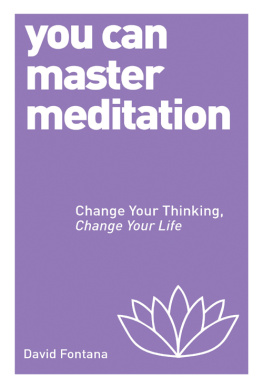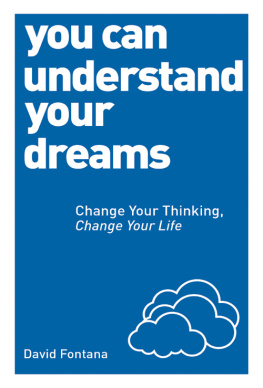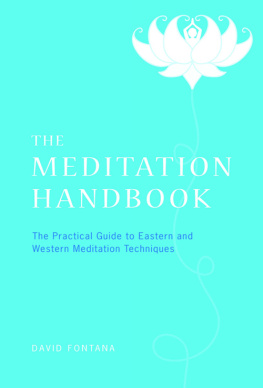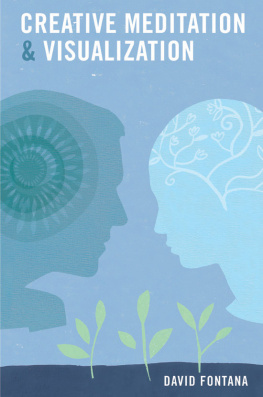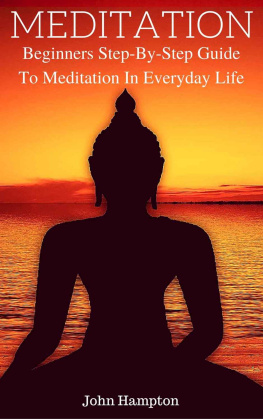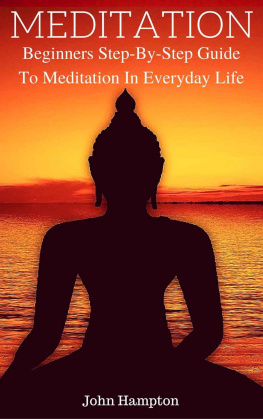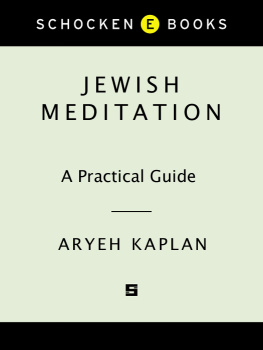
Meditation is the experience of the limitless nature of the mind when it ceases to be dominated by its usual mental chatter.
contents
introduction
T his book is intended for those who have no experience of meditation, as well as for experienced meditators who have taken the decision to expand their knowledge of the practice. Its aims are to discuss the theory and technique of meditation, to explain the potential benefits, and to help readers make satisfactory progress on the path toward enlightenment.
If you are a beginner, it is very important to read through Part 1 (The Gateway) before you begin meditation this section will give you the essential information that you need to make a bold start on your journey.
Over time, a number of meditation techniques have been built up in different cultures around the world. We have tried to explain most of them in this book, giving you a grounding in all the great traditions. However, we do not suggest that you try them all. Different techniques appeal to and suit different people, and it is up to you to decide which ones are best for you choose those with which you feel most comfortable, least self-conscious and most confident. One particular practice is not necessarily better than another: fundamentally, the basics behind all the major practices are the same it is only the details, and some of the belief systems underlying them, that differ.
Please note that this book does not make claims for meditation as a treatment for any particular psychological or physical problems. If you are looking for ways in which meditation can help such problems you should refer to a suitably qualified practitioner who will be able to offer you the best remedies. Ultimately, meditation is an intensely personal experience, and people respond to it in different ways.
If you have a psychological or medical condition that you think might be worsened by meditation, again you should seek qualified advice before commencing. It is very rare for anyone to experience adverse effects from meditation, but it can happen, and if you have any anxieties before you begin, or once you have started, you should wait, or stop the practice, and seek specialist advice.
The decision to embark upon meditation should not be taken too lightly. Meditation is a serious practice that, for the best results, requires commitment, determination and patience. So why then would we start meditating? Even the most everyday reasons, such as to calm the mind, to give us clarity in daily life, to be more thoughtful of others, are ways of being to which most of us aspire. And if it seems like a lot of hard work, remember that these and many other benefits can be achieved, at least in a small way, by the single act of stilling the mind. Mental chatter has become such a habit for most of us that stopping it even for very short periods of time does not come easily which is why some Zen masters referred to this chatter as the gate. When first we try to meditate, the gate appears firmly closed. The mind, although we think it belongs to us, seems to have a stubborn will of its own. But with the help of the techniques we shall be exploring together and a dose of patience the gate is progressively seen as the unreal barrier that actually exists, and miraculously we find ourselves through it and embarked upon our meditative journey.
Meditation is a continual learning curve. We dont need to journey very far to begin to benefit from the experience of meditation, but we need to have commitment if we are to reach advanced levels of mental strength. Nevertheless, for many of us, the simple act of emptying our heads is like refreshing ourselves mentally and physically.
how to use this book
I n order to best help meditators reach a deep level of contemplation, You Can Master Meditation, through appropriate methods, the teachings of the great traditions, and suggestions on how to find the right meditation teachers, is divided into two major parts. The first part is primarily for those who are new to meditation; the second part is more advanced.
Part 1: The Gateway
Through the gateway of the gateless gate lies meditation. The term gateless gate is a Japanese mumonkan a Zen saying that at first glance seems nonsensical, but the reality of which is profound: the gate is at once a thing (to pass through) and a no-thing (the distractions that hinder heightened mental awareness). If meditation lies beyond the gateless gate, then we have to reach the other side before we can attain certain levels of contemplation and insight. Nothing comes between us and the ability to meditate except the thinking, planning and remembering that most of us habitually allow to dominate in our mental lives.
The books first chapter (A Path Without End) is a detailed introduction to the ways of meditation, what it is for and where it comes from. If you are a beginner, take time to mull over this background information: if it is well remembered and well understood, it will help you to affirm why you should persevere if at any time your progress seems slow or difficult. Come back to these introductory pages at any stage.
In chapter two (Entrances), we look at the practicalities of learning to meditate. Where should we sit? How long should we spend meditating? What should we wear? Use this chapter as a guide: once you have gained confidence, experiment with your own ideas to create your own perfect meditation scenario. Once chosen, stick to your setting as it will help to put you in the right frame of mind at the beginning of each meditation session.
Chapter three discusses in detail the Essentials of meditation, such as focusing the mind to control wayward thoughts and emotions. Try to remain patient with yourself throughout this section (for many of us, learning to meditate means undoing the habits of a lifetime): take it slowly and progressively.
Part II: Beyond the Gateway
Meditation has taken many forms across the world. Through a brief overview of each of the great traditions, we gain some valuable insights into how advanced meditation can be achieved. Use this section as a guide to which of the traditional methods might best suit you or which elements of each you might like to include in your own practice.
In chapter five (Vision and Sound) we hone in upon some of the methods of the various traditions. Again, it is important to persevere even when you find things difficult and, if necessary, go back to the more basic techniques of Part I to re-establish self-confidence. If you find that one tradition simply doesnt work for you, move on to the next. Stick to a particular method once you have found it.
Zen has a section to itself in chapter six. This Japanese form of meditation is one of the most difficult to master but can be enormously rewarding. Study its methods carefully, but dont push yourself. If it appeals to you, you may find it useful to find a Zen teacher who will give you detailed instruction and guidance.
At very advanced stages of meditation, highly spiritual experiences can occur. The last chapter of this book explains some of these phenomena and will guide you on how best to prepare your body and mind to receive this level of spirituality. However, occurrences such as out-of-body experiences and hallucinations are rare, and, for the most part, occur only in meditators who have devoted much of their lives to the search for enlightenment. It is important to understand the nature of these states so that we can become more receptive, but be patient such spirituality takes years (perhaps a lifetime) of practice.
Next page
